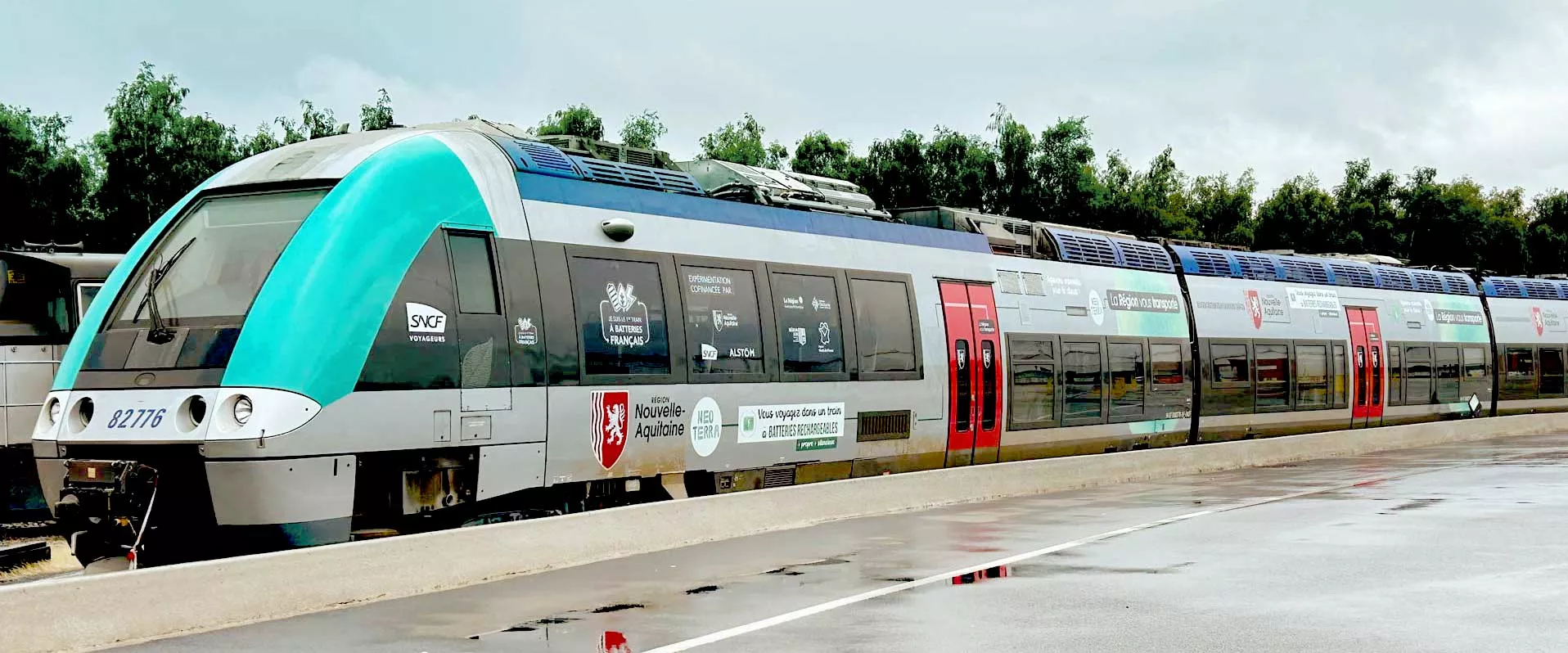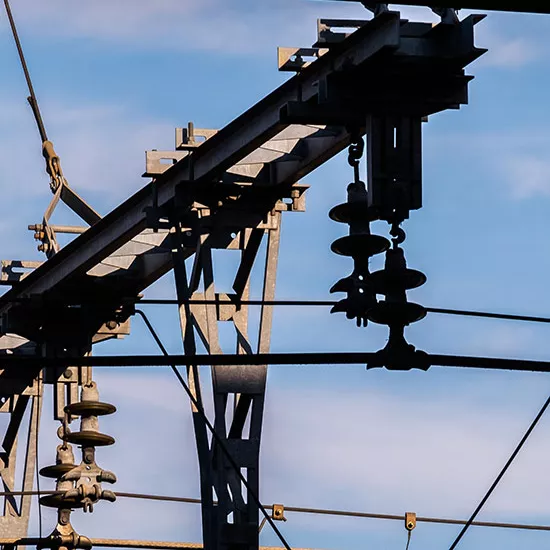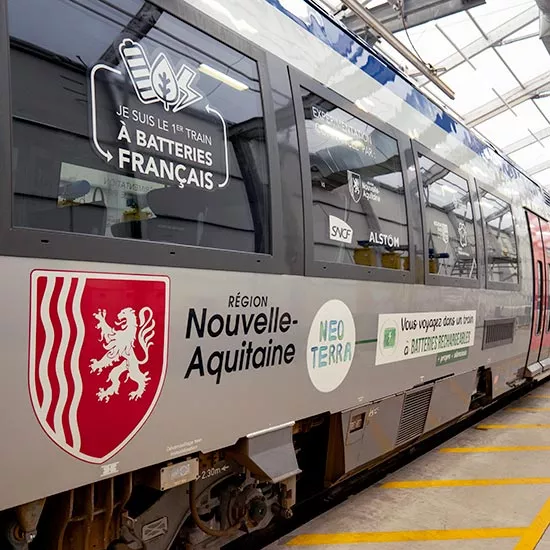
Leaving diesel behind with battery-powered TERs
At SNCF, we’re replacing diesel engines with lithium batteries—a move that will cut CO2 emissions and reduce energy consumption by up to 20%. Learn more about our Battery TER project, backed by SNCF Group, 5 French regions and train manufacturer Alstom.
Replacing engines with batteries
SNCF Voyageurs has teamed up with Alstom and the Auvergne-Rhône-Alpes, Hauts-de-France, Nouvelle-Aquitaine, Occitanie and Provence-Alpes-Côte-d’Azur regions to trial battery-powered TERs. The challenge: transform 5 high-capacity railcars into fully electric dual-mode trainsets powered by catenaries/batteries, replacing two thermal engines with lithium-ion batteries.

5
high-capacity railcars converted to dual-mode multiple units

€40M
invested in Battery TER by French regions, SNCF Voyageurs and Alstom

85%
lower nitrogen oxide (NOx) emissions thanks to battery-powered TERs
Ongoing tests
2 dual-mode railcars have gone 100% electric, after having their diesel engines replaced with lithium-ion batteries. The tests at the Centre d'Essais Ferroviaires de Bar-le-Duc (Meuse) and on the Réseau Ferré National have been successfully completed. These trainsets still have to undergo in-depth investigations to rule out any safety risks. Two more will be modified in 2025, and one in 2026, before commercial service starts in partner regions.
How it works
The lithium batteries will be charged primarily by catenaries and in electrified stations, but recovered braking energy will also be stored in the batteries. The new TERs should be able to cover 80 km of non-electrified line on battery power alone, cutting energy consumption by 20%.
Where to look for battery TERs
One battery-powered TER will run in each of the 5 regions taking part in the trial. We expect them to serve regional lines such as:
- Lyon – Bourg-en-Bresse
- Arras – Saint-Pol-sur-Ternoise – Béthune
- Bordeaux – Mont-de-Marsan, Bordeaux – Saint-Mariens, Bordeaux – Le Verdon
- Nîmes – Le Grau du Roi
- Avignon TGV – Carpentras, Marseille – Miramas via la Côte Bleue
The future of regional trains
How are we decarbonizing tomorrow’s TERs? How long will the batteries last? Can they be recycled? TER project manager Jérôme Leroy tells us more.
Why focus on batteries?
We want to decarbonize the TER fleet, and battery trains are one way to do that. As with the hybrid TER, using battery power is part of our effort to reduce the carbon footprint of our trains by limiting emissions of key pollutants. And the batteries have enough power to perform a number of journeys. On lines without catenaries, the new trains can run up to 80 km before they need to recharge. That’s impressive.
More trains, less CO₂
A key goal of PlaneTER—our campaign to shrink the TER fleet’s environmental impact—is to develop innovative new trainsets that run on hybrid power, hydrogen and biofuel as well as batteries.